For beautiful, water-efficient boundaries in Houston, consider Texas Lantana, Autumn Sage, and Flame Acanthus. These native plants thrive with minimal irrigation while attracting wildlife like butterflies and hummingbirds. Gulf Coast Muhly and Black-eyed Susan add visual interest with their distinctive textures and blooms. You’ll save water while creating privacy screens that adapt to local soil conditions. These drought-tolerant options offer year-round appeal and environmental benefits beyond just marking property lines.
Benefits of Native Drought-Tolerant Hedges for Texas Gardens
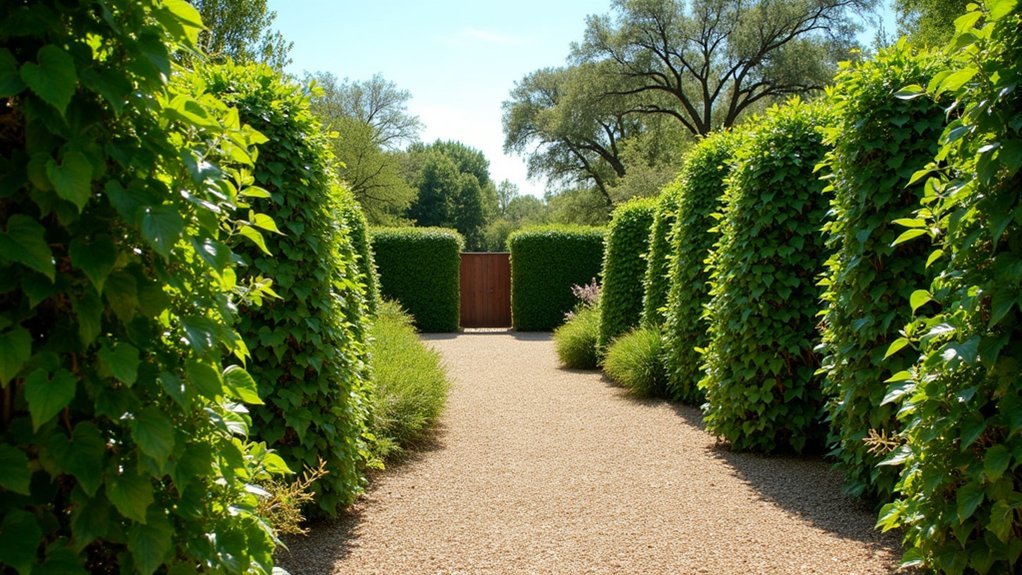
While many gardeners struggle with the harsh Texas climate, native drought-tolerant hedges offer a perfect solution for creating beautiful boundaries without excessive water consumption.
By choosing plants like Texas Lantana and Autumn Sage, you’ll enjoy a privacy hedge that thrives with minimal maintenance while enhancing your garden’s aesthetic appeal.
Native hedging plants support local wildlife by providing habitat and food sources—Yaupon Holly’s berries attract birds, creating a vibrant ecosystem in your yard.
You’ll notably reduce water usage while promoting environmental sustainability in your Texas garden.
These plants are naturally adapted to local soil conditions, ensuring stronger growth and better resistance to pests and diseases.
Black-eyed Susan and Turks Cap foster biodiversity, contributing to a healthier, more balanced ecosystem right in your backyard.
Top 7 Low-Water Boundary Plants for Houston Landscapes
Houston gardeners face unique challenges with the region’s hot, humid climate and occasional drought conditions.
When selecting drought tolerant hedges for your property boundaries, consider Texas Lantana, which thrives in heat while attracting butterflies to your landscape. Black-eyed Susan offers gold daisy blooms that withstand dry periods beautifully.
For fast-growing shrubs that create an effective privacy screen, plant Autumn Sage, which draws bees and hummingbirds while requiring minimal water.
Gulf Coast Muhly provides airy pink plumes that create visual interest along property lines while supporting local wildlife. Flame Acanthus, with its striking red-orange flowers, makes an excellent xeriscape boundary that hummingbirds love.
These resilient plants offer both functionality and beauty while conserving precious water resources in your Houston garden.
Designing Effective Natural Barriers With Water-Wise Plants
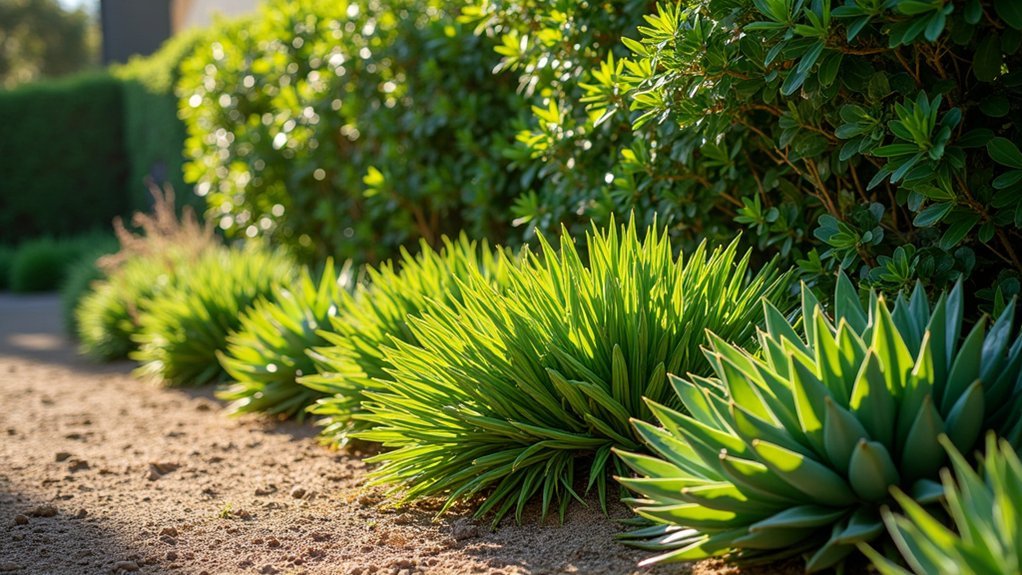
Creating effective natural barriers doesn’t require wasteful water practices, especially in Houston’s challenging climate. When designing your boundary, consider layering drought-tolerant hedges in strategic patterns to maximize privacy while minimizing resource usage.
| Plant Type | Height | Water Needs | Wildlife Benefit |
|---|---|---|---|
| Texas Lantana | 3-4 ft | Very Low | Butterflies |
| Boxwood | 4-8 ft | Low | Bird nesting |
| Green Giant Arborvitae | 20-30 ft | Moderate | Shelter |
| Lavender | 2-3 ft | Very Low | Pollinators |
Native drought-resistant shrubs like Texas Rock Rose and Turk’s Cap offer dual benefits—they thrive with minimal irrigation while supporting local ecosystems. For quick establishment, mix fast-growing varieties with slower, more permanent water-wise plants, creating depth and year-round interest in your natural boundary.
Seasonal Care Tips for Drought-Resistant Hedge Boundaries
Maintaining your drought-resistant hedge boundary requires different approaches as seasons change in Houston’s climate. Adjust your watering frequency seasonally—deep water every few days during establishment, then reduce as roots develop.
Early spring pruning practices create denser foliage and stronger structure before summer heat arrives.
- Apply slow-release, high-nitrogen fertilizer in early spring, aligning fertilization timing with the beginning of the growth cycle.
- Refresh mulch layers in spring and fall to maximize moisture retention and regulate soil temperature.
- Monitor for pests and diseases monthly, especially during drought periods when plants face additional stress.
Remember that proper seasonal maintenance transforms a simple hedge into a resilient boundary that thrives year after year with minimal water requirements.
Enhancing Wildlife Habitat With Drought-Hardy Hedge Selections
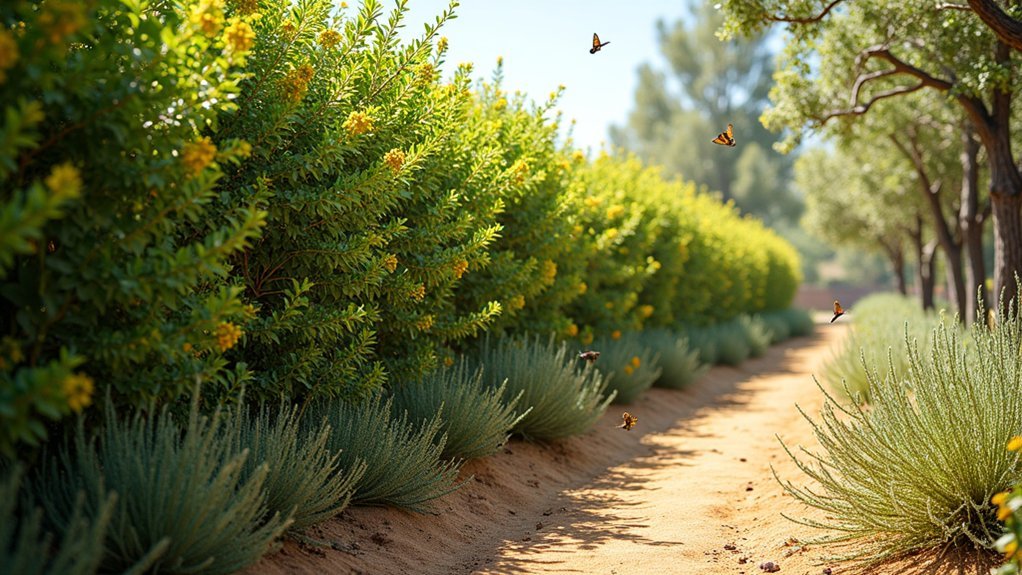
While creating beautiful boundaries in your landscape, drought-hardy hedges offer a remarkable opportunity to transform your yard into a thriving wildlife sanctuary.
Plants like Texas Lantana and Autumn Sage don’t just survive dry conditions—they provide essential food sources that attract pollinators, including bees and butterflies.
Native drought-resistant plants nourish our ecosystem, transforming ordinary boundaries into vibrant feeding grounds for essential pollinators.
You’ll find that species such as Flame Acanthus and Gulf Coast Muhly create ideal shelter and forage for local wildlife, while Black-eyed Susan and Turks Cap establish natural habitats for birds and beneficial insects.
By incorporating these native drought-tolerant hedges into your garden design, you’re supporting biodiversity while conserving water.
These sustainable landscape choices require minimal maintenance yet deliver maximum ecological benefits, creating a balanced ecosystem where local wildlife can thrive alongside your beautiful boundary plantings.
Frequently Asked Questions
What Is the Most Drought-Resistant Hedge?
For the most drought-resistant hedge, you’ll find the Oleaster (Elaeagnus angustifolia) exceptionally hardy. Its grey-green foliage reflects sunlight, reducing water needs, and it thrives in dry, sunny conditions with minimal care.
What Is the Best Border Hedge?
For the best border hedge, you’ll love Boxwood for formal boundaries, Berberis for colorful security, or Lavender for aromatic edges. Your choice depends on the style and privacy level you’re seeking.
What Is the Best Bush to Block Neighbors?
For blocking neighbors, you’ll want Green Giant Arborvitae for fast growth (3-5 feet yearly), English Laurel for thick coverage, or Privet for dense foliage. All create effective privacy screens reaching 8-12 feet tall.
What Is the Best Hedge for Dry Conditions?
For dry conditions, you’ll find Boxwood and Japanese Barberry excel as resilient hedges. Don’t overlook Lavender for fragrant options. Cherry Laurel provides year-round privacy, while Oleaster thrives with minimal water once established.
In Summary
You’ll find that drought-tolerant hedges like Texas Sage, Yaupon Holly, and Cenizo offer the perfect solution for your boundary needs. They’ll thrive in Houston’s challenging climate while reducing your water bills and maintenance time. By selecting native options, you’re creating wildlife habitats and natural barriers that look beautiful year-round. With proper seasonal care, these water-wise choices will define your property for years to come.
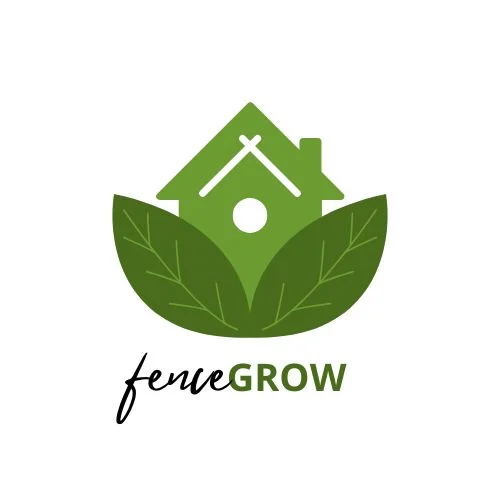
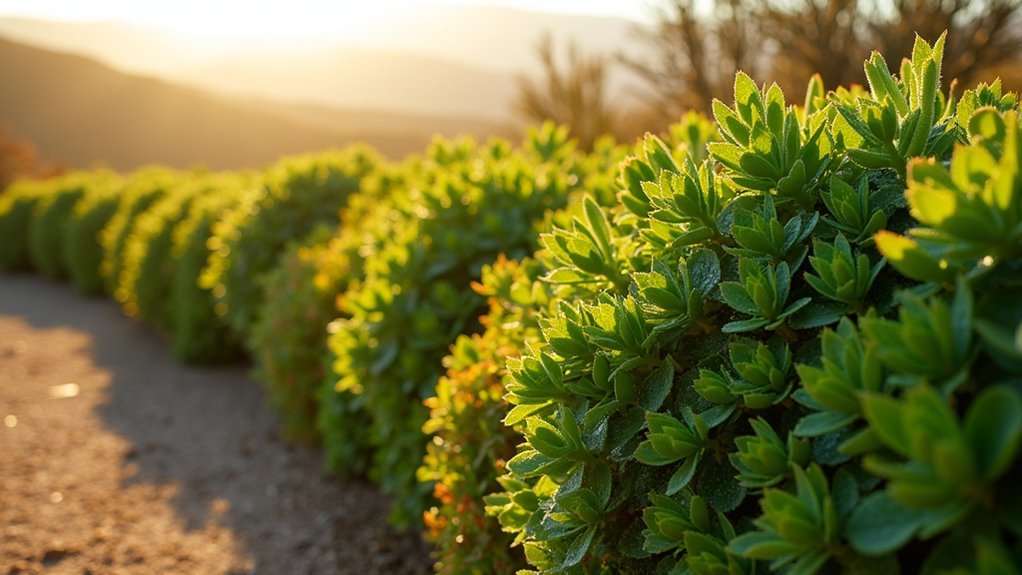

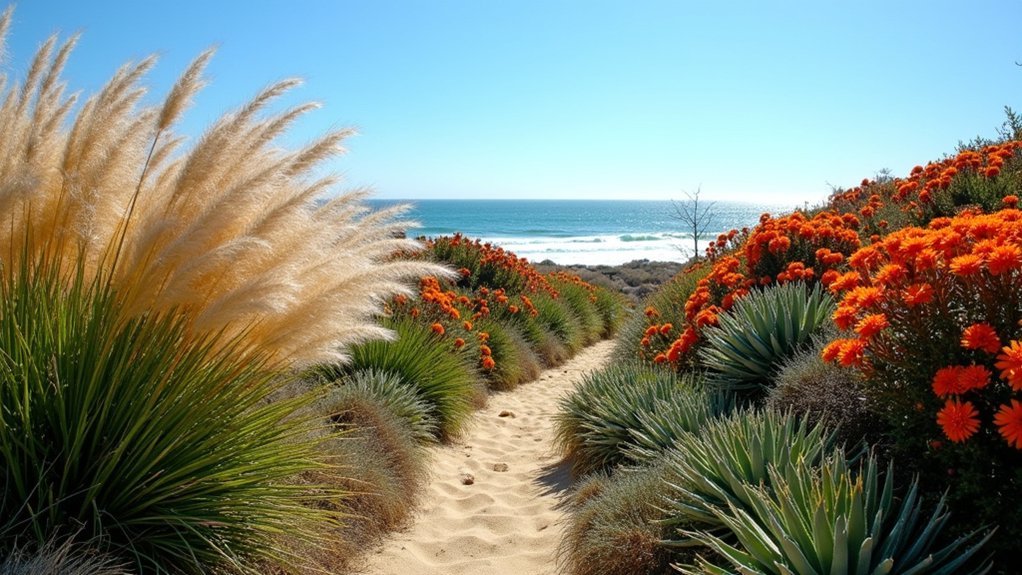
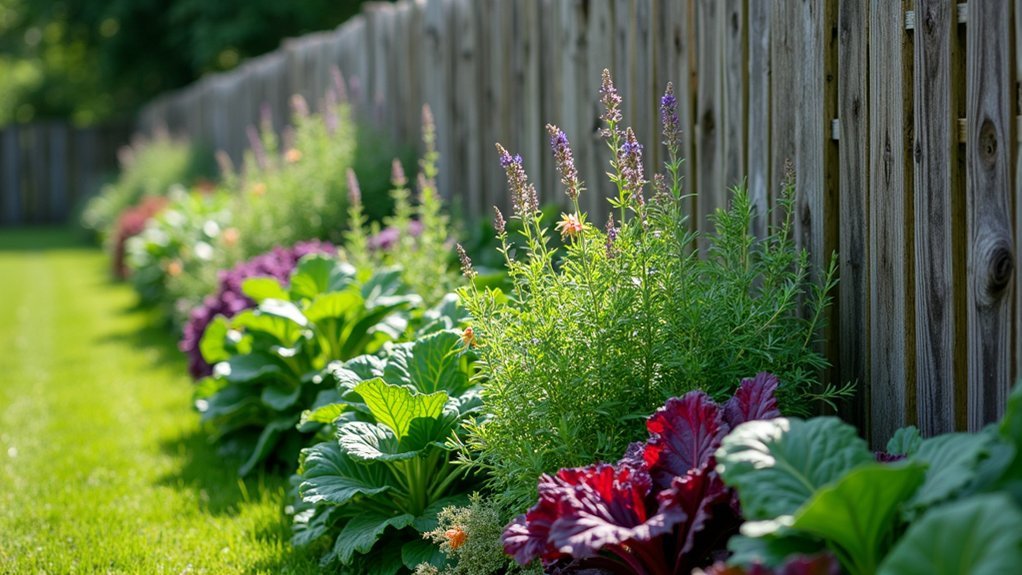
Leave a Reply